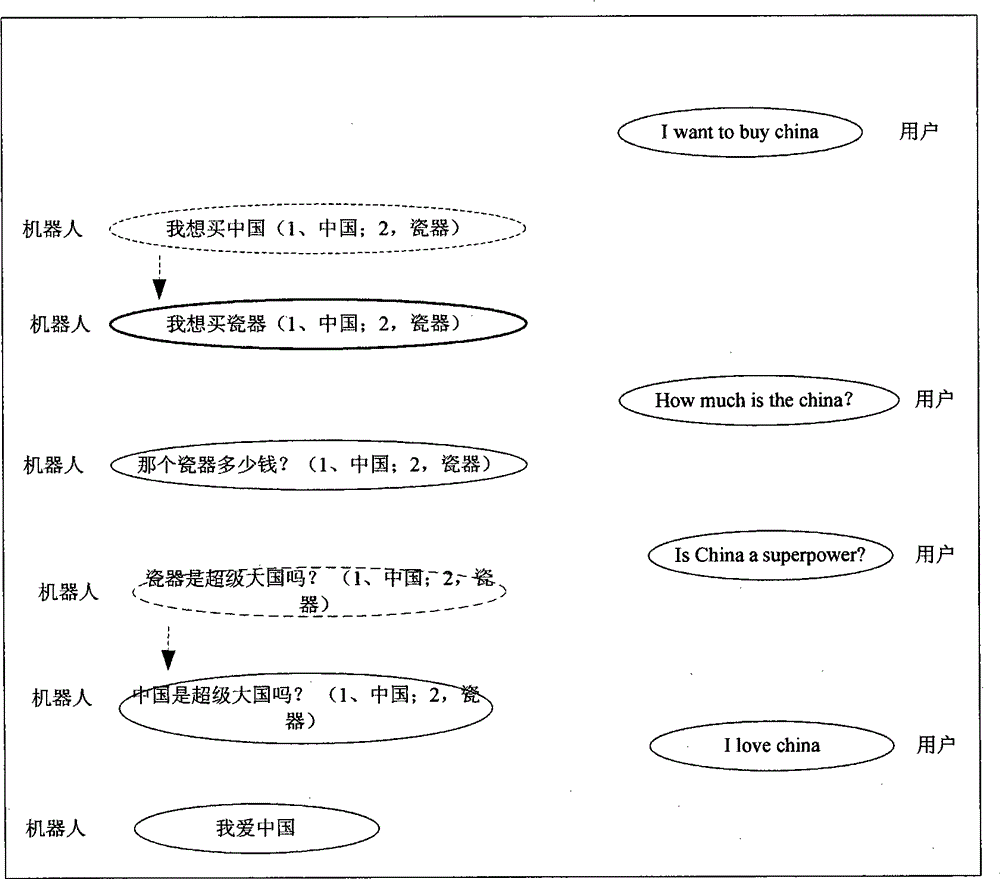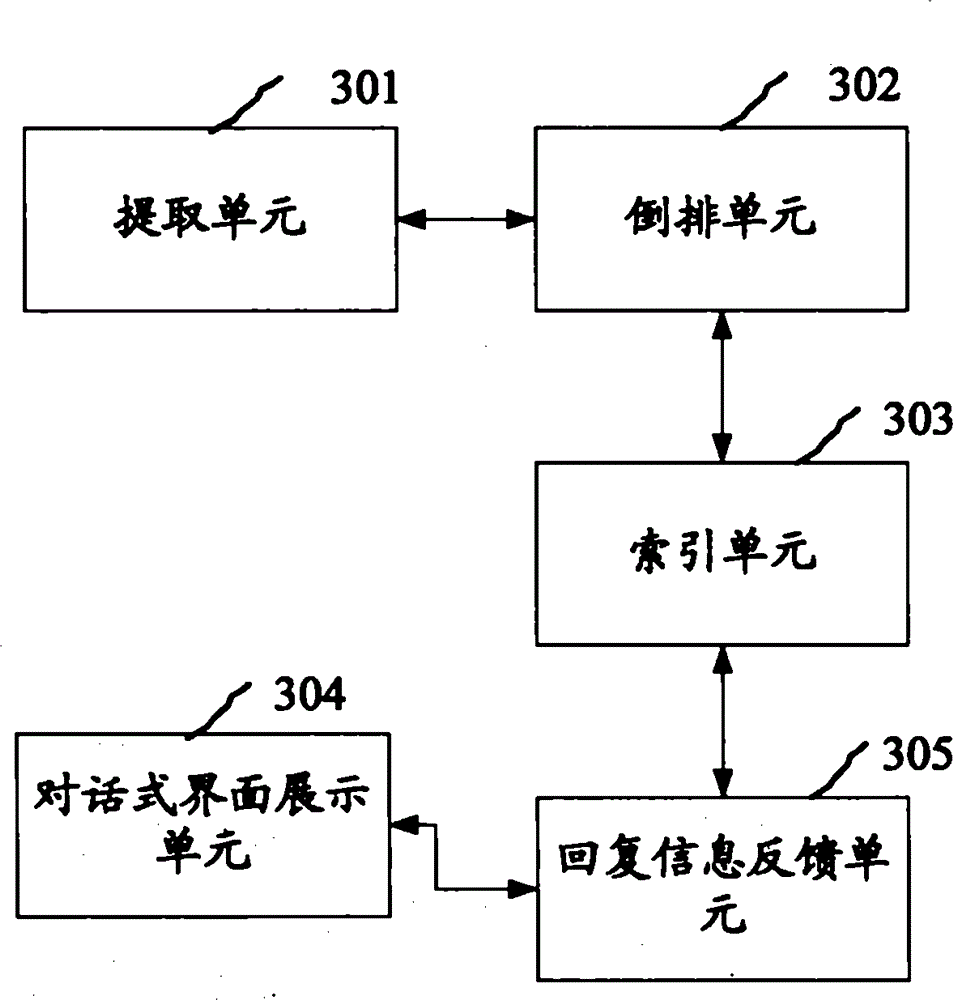Conversational natural language processing method and device
A natural language processing and conversational technology, applied in the field of natural language processing and/or search, which can solve the problems of incomplete search, inability to distinguish accurately, and low search quality, and achieve high efficiency and improve processing accuracy.
- Summary
- Abstract
- Description
- Claims
- Application Information
AI Technical Summary
Problems solved by technology
Method used
Image
Examples
example 2
[0039] By analyzing the above two examples, it can be found that:
[0040] "Rural tourism", "Chinese tourism" and "tourism development" are equivalent to the variables in Example 1, because by replacing the corresponding parts (ie variables), their semantic meaning can basically be preserved. And "x is an important part of x and an important support to promote x" (where x represents blank) is equivalent to the linear structure of Example 1, which is the constant of language, because the meaning of language is hidden in this linear structure.
[0041] Similarly, "China's economy", "world economy", and "global financial stability" are equivalent to the variables in Example 2, because by replacing the corresponding parts (ie variables), their semantics can basically be preserved. And "x is an important component of x and an important support to promote x" (where x represents blank) is equivalent to the linear structure of Example 2, which is the constant of language, because the ...
example 4
[0048] By analyzing the above two examples, it can be found that "Avatar" and "China" are equivalent to the variables in Example 3, because by replacing the corresponding parts (ie variables), their semantic meaning can basically be preserved. And "x boom sweeps x" (where x represents blank) is equivalent to the linear structure of example 3, which is the constant of language, because the meaning of language is hidden in this linear structure.
[0049] Similarly, "stock trading" and "world" are equivalent to the variables in Example 4, because by replacing the corresponding parts (ie variables), their semantics can basically be preserved. And "x boom sweeps x" (where x represents blank) is equivalent to the linear structure of example 4, which is the constant of language, because the meaning of language is hidden in this linear structure.
[0050] It can be found that the linear structure of the two examples is the same, the difference is only in the variables. "X craze sweep...
example 8
[0056] By analyzing the above four examples, it can be found that:
[0057] "They", "European Commission" and "Application for Market Economy Treatment of Chinese Enterprises" are equivalent to the variables in Example 5, because by replacing the corresponding parts (namely variables), their semantic meaning can basically be preserved. And "x appeals to x to treat x objectively and fairly" (where x represents blank) is equivalent to the linear structure of example 5, which is a constant of language, because the meaning of language is hidden in this linear structure.
[0058] Similarly, "FIFA", "Ireland" and "the result of the World Cup qualifier against France" are equivalent to the variables in Example 6, because by replacing the corresponding parts (ie variables), their semantics can basically be preserved. And "x appeals to x to treat x objectively and fairly" (where x represents blank) is equivalent to the linear structure of example 6, which is a constant of language, bec...
PUM
 Login to View More
Login to View More Abstract
Description
Claims
Application Information
 Login to View More
Login to View More - R&D
- Intellectual Property
- Life Sciences
- Materials
- Tech Scout
- Unparalleled Data Quality
- Higher Quality Content
- 60% Fewer Hallucinations
Browse by: Latest US Patents, China's latest patents, Technical Efficacy Thesaurus, Application Domain, Technology Topic, Popular Technical Reports.
© 2025 PatSnap. All rights reserved.Legal|Privacy policy|Modern Slavery Act Transparency Statement|Sitemap|About US| Contact US: help@patsnap.com



